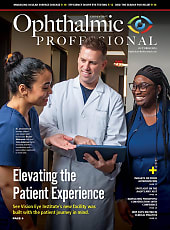Inherited retinal diseases (IRDs) pose unique challenges for retina practices, not only in diagnosis and management but also in accurate billing, coding, and documentation. Just as payers have increased scrutiny on high-cost drugs, that scrutiny will likely extend to emerging genetic therapies.
Given the growing potential for IRD treatments, it’s more important than ever for retina practices to understand the nuances of documentation and billing for these conditions. Let’s explore some common questions that come up in this evolving area.
Q: Why are IRDs challenging from a billing and documentation perspective?
A: Many, if not most, of the IRDs do not have specific corresponding diagnosis codes but fall into a couple of categories that lack specificity for the diagnosis. These include unspecified hereditary retinal dystrophy (H35.50), pigmentary retinal dystrophy (H35.52), other dystrophies primarily involving the sensory retina (H35.54), and dystrophies primarily involving the retinal pigment epithelium (H35.54). On October 1, 2025, ICD-10 code Q99.8 (Other specified chromosome abnormalities) was expanded to address Usher syndrome specifically.
The medical record documentation, including signs, symptoms, and exam findings, is crucial to support the diagnosis.
Q: What are common billing issues related to IRDs?
A: As with any area of billing, several challenges arise with IRDs. Missing documentation is a frequent problem, particularly when it comes to justifying diagnostic testing or genetic laboratory panels. Another common issue is the use of cloned or poorly edited notes, which fail to demonstrate disease progression. Finally, many claims are weakened when the findings from diagnostic tests or lab results are not clearly linked to the patient’s diagnosis and treatment plan.
Q: What documentation is required to justify genetic testing for IRDs?
A: Documentation should include:
- Clinical findings and family history suggestive of a genetic disorder;
- Evidence that the test will influence the treatment plan;
- Records of previous evaluations or treatments and their outcomes; and
- Informed consent and documentation of genetic counseling, particularly for pediatric patients.
Payers typically require that testing include relevant gene panels, such as RPE65, and that it follow established clinical guidelines.
Q: How should diagnostic tests be documented?
A: In most retina practices, the ancillary staff performs most diagnostic testing. The provider who will use the test findings must be the one who orders the test. The order should include the medical indication, the test modality, the structure to be imaged, and the expected timeframe for the testing.
Q: What red flags do auditors look for in IRD-related records?
A: The audit triggers for IRD-related diagnoses are the same as any other diagnosis:
- Cloned notes across visits
- Lack of disease progression documentation
- Diagnostic testing without documented medical necessity
Accurate documentation is fundamental for reducing denials and compliance risk in IRD. As with all medical coding and billing, the chart should support medical necessity with clear documentation for each visit, which includes the history, exam, diagnostic testing, and impression/plan. Following payer guidelines for the frequency of exams and testing, as well as any other requirements, is essential for retina practices to avoid denials and delays. RP









